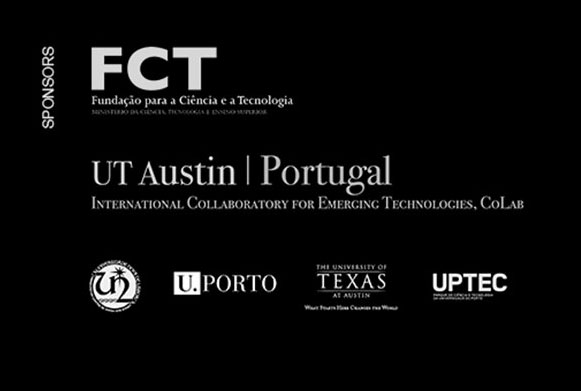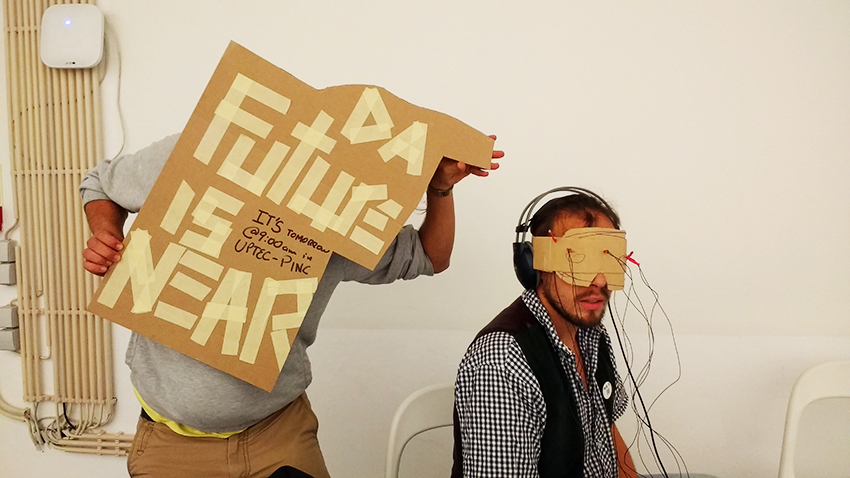
Introduction
Cyborg came from the blend of the words Cybernetic and Organism. The Cyborg Foundation define it as “… the different types of relationships between technology and organisms”. The cyborg is at different levels, an integration of technology in the human body to enhance or decrease some abilities. We could consider ourself as a kind of cyborg after a vaccine because we help our body to recognize the virus by implementing this technology in us.
Parallel to the real approach, a vast exploration of the cyborg exists in Sci-Fi literature, manga, cinema and performance. Exploring potential relations between human being, animals and society in intimate relation with technology, like Ghost In the Shell from Masamune Shirow.
In our workshop we had the goal to make the participants become a low-tech and low-fi cyborgs by themself. Of course we didn’t try to implant anything inside their bodies, instead of it, we created together wearable devices.
Coordinators:
Joaquin Diaz http://joaquindiazduran-carpeta.blogspot.pt/
Santo www.osantocesar.com
Participants:
Nils Ehrenberg ehrenberg.cc
Sofia Gouveia
Output description:
During this workshop we developed three cyborgs, named after the numbers 1, 2 and 3. The work was developed following the interest of the participants following four elements: Taking out the ability of speak, hear, see and register how the body shape and movements changed with the interaction device fixed and actioned in the user.
The following is the description of each cyborg suit developed:
The nr. 1 consist on a headset which takes from the user the ability of see and replace it with sounds. The user can receive sound signals originated from the light changes occurred in the environment where she finds herself. The device is a low-fi and low-tech virtual reality headset.
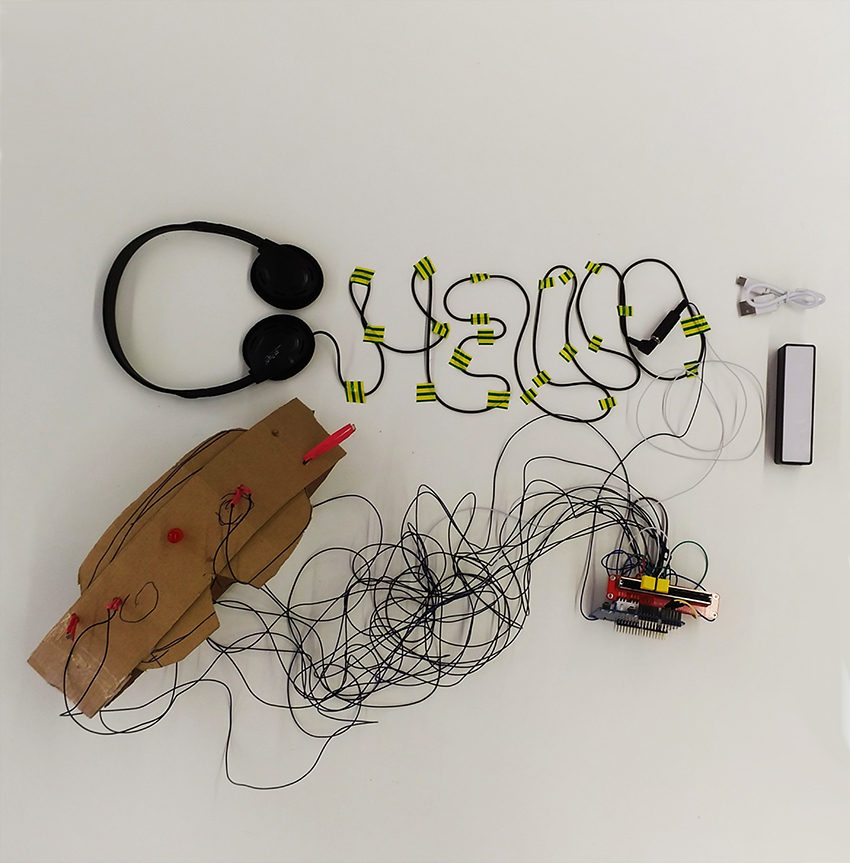
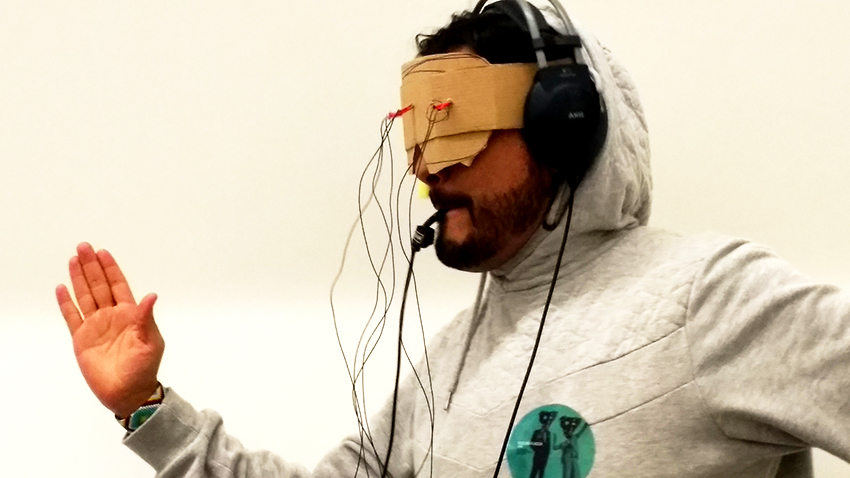
The nr. 2 is again a headset that does not allow the user to see and it has also three arm sensors (3 left and 3 right) which react lighting a LED every time the hand, the elbow or the shoulder gets closer to any object or surface. On the headset -at the high of the eyes- are also two sensors and two LEDS (again left and right). The sensors (LDR or light dependant resistors) also react by lighting changes on the environment giving the chance to interact with the illumination.
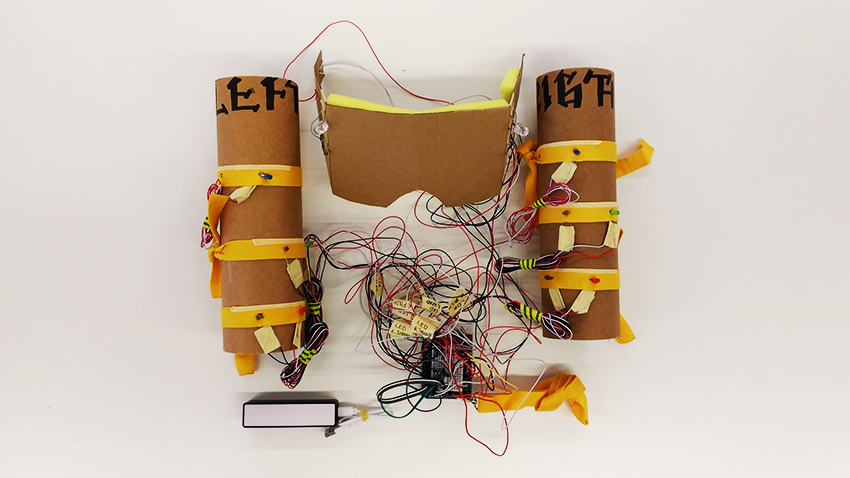
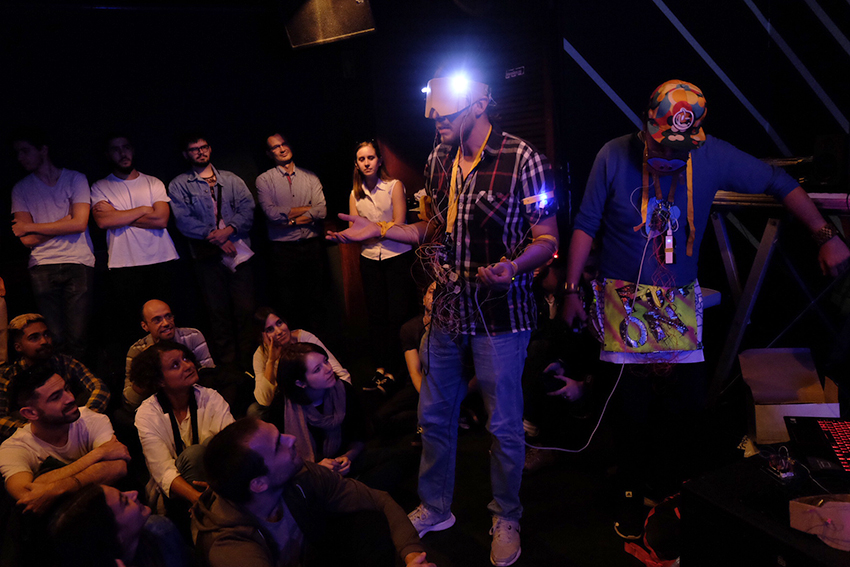
The nr. 3 also known as the queer cyborg, consist on a mouth set covering the area of the lips were a distance sensor is placed. The sensor is connected to a body set placed under the waistline, at this area the body set shows the words Fuck ON. The words is illuminated by LEDs when user closes the mouth set to something or somebody, simulating a kiss.
“The Queer Cyborg explores our body, intimacy, the ability or inability to express desire, and also to experience it. By removing the mouth, we take away our ability to speak, but keep the ability to sense. The cyborg is instead able to only express itself in one dimension, through the distance, which is communicated by the pulsing light of the skirt, with the text reading “Fuck on”. Everything is connected to the heart, much like the cyborg, where the processor is placed, tying the body together.” Nils Ehrenberg
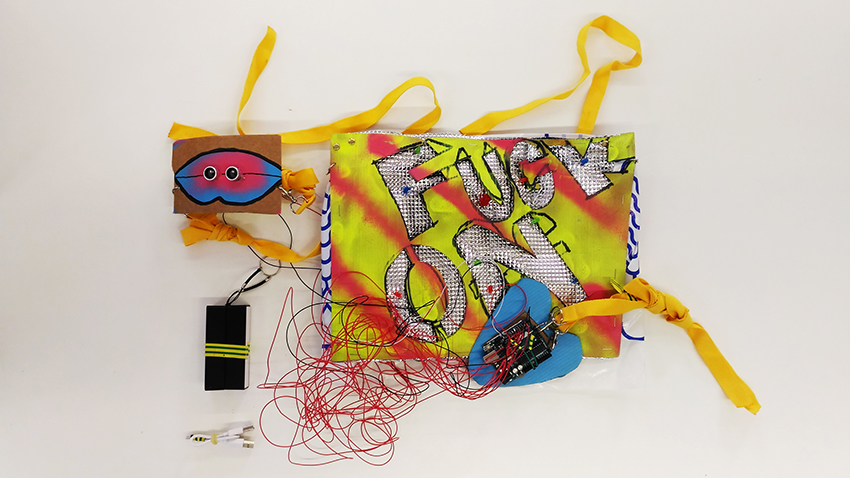
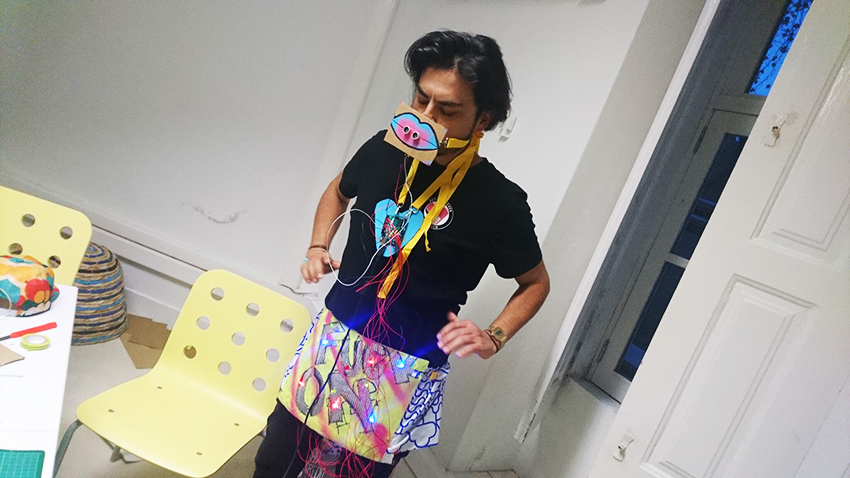
Reflection about the workshop:
Technology can enhance or even substitute any natural given capacity of our body. Technology, such as wearables tend to replace our capacities, especially the senses of seeing, hearing and touch. Headphones, clothes and glasses has been doing this for long time and they are part of our normal life. But what happens when technology goes deeper by fixing sensors that give us the chance to perceive differently from the way we use to?
The main goal of this workshop was answer the question: How suitable is to replace human capacities through technology? The answer given by these workshop lies not on a technical level but at a critical-theoretical one.
At a technical level, the workshop also shows how difficult is to replace our senses, since simple sensors, such as the one we’ve used, does not allow the incredible margin of calibration and adaptation that our ears, eyes and skin have.
The participants have showed interest and enthusiasm on the making of the cardboard sets, the coding and specially on the discussion about the ethical and economical consequences on applying technologies to replace or enhance our capacities. Those discussions are the major output of the workshop.
Original briefing:
How suitable is it to replace human capacities through technology? A practical workshop.
During this workshop, participants will build a sensitive device which will partially substitute their own capacities of seeing and hearing. The final device will be tested on a real life situation by completing tasks on a public space.
Our aim is to encourage a critical reflection about how far does technology may go by replacing human natural born capacities. Even if we will build a device together with the participants, this workshop concentrates on critical reflexion and not on programming or product aesthetics. Participants may bring their best disposition not only to build the device but also to test it in real life.
The workshop targets people interested in critical thinking on technology. It doesn’t require any specification of age, gender or career orientation. Participants may have a basic knowledge in the use of computers. Basic knowledge of programming, especially Arduino, is desirable but not mandatory.
Each participant must bring a laptop and a camera to register their work. They can use their smartphone, however a simple digital camera is recommended since many smartphones may run out of battery and memory. The workshop will provide all electronic components needed.
All participants must be committed to staying during the whole workshop, from 9:00 am til 6:00 p.m. (with a break for lunch of course).
This workshop can only host up to 8 persons.
Each participant must bring a laptop and a camera to register their work. They can use their Smartphone, however a simple digital camera is recommended since many Smartphones may run out of battery and memory.

